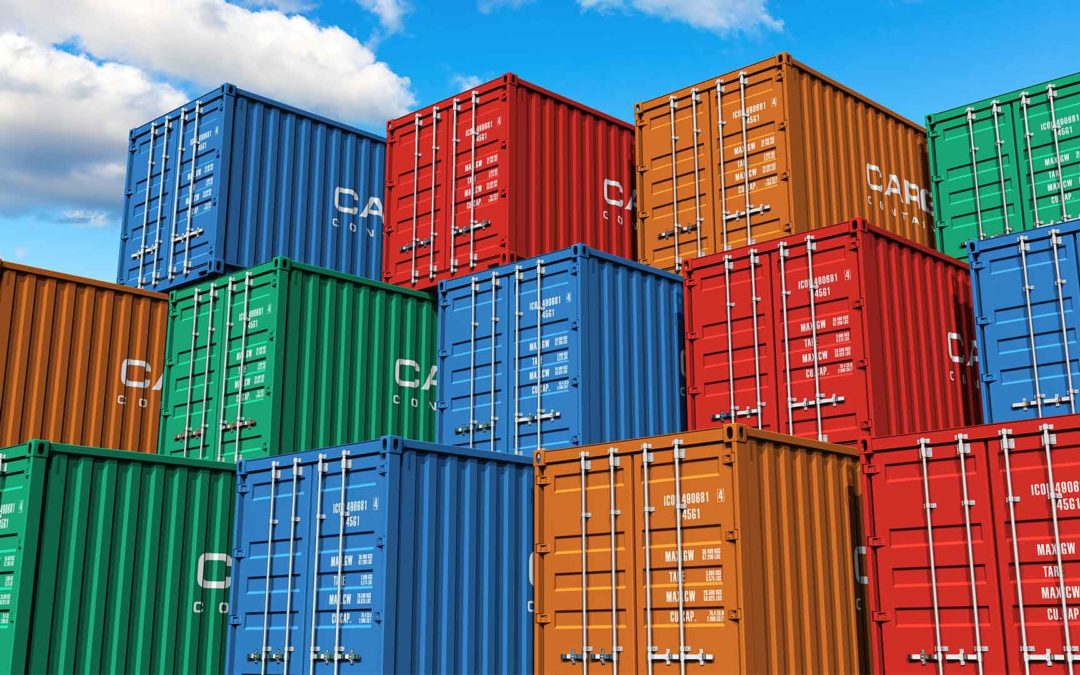How global visibility platforms can help organizations overcome yet another impact of the global pandemic: a critical shortage of ocean containers.
In November, the rumors about a potential ocean container shortage turned into real concerns for companies shipping goods from China and other international origins. It’s had a trickle-down effect on supply chains around the globe, disrupting trade and driving a mad scramble to secure containers for upcoming shipments.
“The peak volumes of Chinese goods headed to the U.S. since July has led to overwhelmed U.S. ports and significant congestion and delays in returning empty containers to Asia,” EPS News reported in late-2020.
The equipment shortage, as well as continued strong volumes, were also being felt in Asia-Europe and Asia-Mediterranean lanes, where rates began to climb in November. At the time, the main impacts were rising rates and a looming peak season surge (i.e., the holiday season), with some companies reporting significant delays in deliveries.
CNBC credits the pandemic and the “uneven global economic recovery” with creating the problem in Asia, but says that other parts of the world have also been hit. “Industry watchers said desperate companies wait weeks for containers and pay premium rates to get them, causing shipping costs to skyrocket,” it reports.
In December, spot freight rates were 264% higher for the Asia to North Europe route, compared with one year earlier. For the route from Asia to the West Coast of the U.S., rates are up 145% year over year. Compared to March 2020’s prices, freight rates from China to the U.S. and Europe have surged 300%, with spot rates now $6,000 per container (compared with the “normal” price of $1,200).
“China is sending out a lot more exports to the U.S. and Europe than the other way round. Its economy bounced back faster as the virus situation within its borders was basically under control by the second quarter of last year,” it adds. “As a result, containers are stuck in the West when they are really needed in Asia.”
Global Transport in Crisis
Turning the calendar over to 2021 didn’t ease the container shortage problem. In fact, in some cases the container shortage has worsened since rearing its ugly head last year.
“Aside from the massive rally in basic shipping rates, there is also the emergence of all of these empty container surcharges and chassis deficit surcharges, as well as fuel surcharges likely to head up again now that oil prices are recovering,” Jeff Berman writes in Logistics Management. “And in due course there is going to be carbon pricing to be included in European-origin shipping rates as well.”
According to CNBC, e-commerce companies and consumers are bearing the brunt of those higher costs. It says Ikea’s Singapore operations is referring to the situation as a “global transport crisis” and estimates 850 of its 8,500 products are affected by shipment delays. And, Chinese tech giant Alibaba’s logistic arm Cainiao recently launched its own container booking service in response to the global shortage.
Technology that Helps Companies Power Through
If S&P Global Platts’ predictions are correct, demand for container freight will remain at high levels throughout the first quarter as importers seek to refill depleted warehouses and ongoing equipment shortages dog the market. “Underpinning the shortage is increased production and export levels in China as they compensate for idle months at the start of 2020 when the pandemic first bit and China imposed strict lockdowns,” it adds. “Many Asian exporters are keen to avoid a repeat of 2020, where pre-Lunar New Year levels of production took almost three months to return.”
For now, companies can deal with the crisis by planning ahead, developing accurate forecasts, and securing container space well in advance. Other smart moves include doing more scenario planning, having contingency plans in place, and using supply chain visibility platforms to get an end-to-end view across all transportation modes. With this level of visibility, shippers can make smarter decisions about their container shipping, negotiate better rates, and ensure that the container capacity is available when they need it.
Knowing that visibility into the entire supply chain is key to making smarter, more profitable decisions in an uncertain transportation environment, IntelliTrans’ Global Visibility Platform incorporates multi-modal command and control features that provide unprecedented visibility across all transportation modes, and that proactively manage shipments from origin to destination, with a focus on exceptions and enhancing your customer experience. The end-to-end supply chain management starts when the shipment leaves your location and doesn’t end until it’s received at its final destination.
.jpg)
IntelliTrans’ Global Control Tower provides high levels of supply chain transparency; aggregates, completes, and enhances data from a variety of sources; offers visibility into and execution of different aspects of the supply chain; and generates data-driven alerts and analytics that ask deeper questions and deliver meaningful insights.
By leveraging tracking information, the Global Control Tower provides analytics that measures key performance indicators (KPIs) like fleet cycle time, origin/destination dwell time, lane and hauler performance, back orders, freight spend, load optimization, and more. With their rate, equipment, lease, tracking, and invoice data in a central repository that’s accessible 24/7, companies can position themselves for success in any market conditions.

